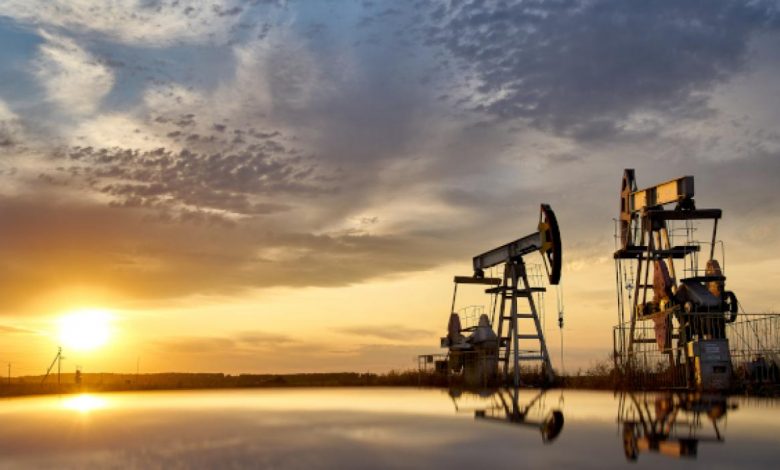blockchain enhances oil and gas sector for investors, regulators and practitioners

The blockchain was first used to support that most practical of activities: buying a takeaway pizza. Since then, it’s been through several development stages but, in many ways, much of this activity has focused on cryptocurrency for cryptocurrency’s sake, with attention devoted on the highs and lows of the price of key currencies. That’s all well and good, but the blockchain also has the potential to become a useful tool to enhance wider economic activity in several ways. During the first phase of its development the blockchain was purely a way of managing information about cryptocurrencies. These have demanded a lot of attention among both technology enthusiasts and, when prices are either at their peak or plummeting to their lowest point, the mainstream press.
The second phase of the development of the blockchain saw it become a tool for small, innovative companies that needed to attract funding. Again, there was both risk and reward in this approach, but if we are honest, the addition of the blockchain hasn’t appeared to particularly enhance the success rate of start-ups in any meaningful way.
The bottom line is that trading cryptocurrency for cryptocurrency’s sake is a risky business, as we’ve seen several times over the last couple of years. Using it as a tool to support innovation has its merits, but it does not make a start-up any more likely to be the next Microsoft, Apple or Netflix. As with any genuine market, there’s no reward without risk, but the value and opportunity that the blockchain could create goes beyond creating novel currencies and enhancing equity for start-ups.
This is what makes the third phase of blockchain development so exciting.
We have continued to learn and adapt the blockchain and recognised its potential to solve a variety of challenges across many complex industries. To take the example of the oil and gas sector, there are several ways that the blockchain can be used to significantly enhance the current situation and resolve current challenges.
Making it easier for the industry to operate
Primarily, the distance between exploration and production (E&P) companies and the end consumer means that there can be a significant disconnect between supply and demand.
Demand for oil and gas products is not constant, with different levels of demand in different parts of the world at different times. The oil and gas sector has found a way around this by maintaining significant storage capacity in different parts of the world.
This has generally worked, but it could be seen as an expensive solution in comparison with keeping resources in the ground until they are required. The problem is that this approach has been virtually impossible in the past because of the complicated path that natural resources have to take from the ground, through processing and refinement, to their ultimate consumer.
But part of the reason that that reserves are maintained at such a high level is that so many oil and gas projects hit delays which have knock-on effects across the supply chain. While many of these delays are caused by practical issues, a fair proportion are caused by bureaucratic issues.
Moving to a blockchain-based platform would mean that these types of issues would be significantly reduced because it would be easier to see where a project was being held up and take steps to fix the problem. With blockchain also comes the feature of tokenization. When adopting tokenization models, natural resources can be represented in a form of a digital asset, allowing producers to optimize cash reserves by entering into smart offtake agreements. In the longer term, with the integration of advanced data analytics and artificial intelligence, it would also make it easier to analyse repeated issues and develop a strategy that would reduce its impact.
This would mean that the industry could monetize the natural resources that are held in reserve, becoming more efficient and reducing physical storage costs.
Attracting investment from new sources
Secondly, traditional sources of support from institutional investors are declining as a result of several factors including the increasing efficiency of alternative sources of energy.
Moving to a blockchain infrastructure would reduce the cost of investment in several ways. For a start it would bring down back office costs and also reduce the reliance on brokers who bring a great deal of expertise to the process but charge significant fees. Reducing these costs would make it economically efficient for oil and gas companies to offer investment at a far lower price point than has traditionally been the case.
Coupled with this is the fact that investments can be managed far more efficiently by technology. In the past, oil and gas companies have faced a choice of either investing in a back office to manage investments or to turn to third parties. Both of these approaches have a cost associated and that cost is added to the price of a project.
Using a blockchain infrastructure would streamline and automate much of this process, keeping costs low.
Putting regulators and investors at ease
Meanwhile, regulators are also looking at the oil and gas sector and discussing whether they should be playing a more active role. It has often been suggested that the sector is somewhat opaque, and while there is some justification in this, it should be pointed out that the lack of transparency is mainly the result of two factors.
On the one hand, there are massive levels of complexity inherent in an oil and gas project that spans multiple third-parties, activities and locations. At the same time, the industry has been developing for over a century, so it is unsurprising that some of its practices can seem a little convoluted from the outside.
In the past, the oil and gas sector has managed to avoid this level of scrutiny because of its complex, global nature. This may not be a reasonable excuse for much longer given the strides that regulators have made in the similarly complex and global financial services sector which now has to report to several regulators in a myriad of ways.
Moving to a blockchain infrastructure would mean that many of these issues could be solved very quickly, offering permissioned access to a live, global pool of information that could help ensure that regulators get the answers they need without oil and gas firms needing to use up time and resources responding to questions.
Giving more investors a new opportunity
Investment is complicated and there are no hard and fast rules, but one piece of advice that tends to be worth listening to is the need to spread risk and ensuring that there’s plenty of diversity in an investment portfolio so that different parts of a portfolio can compensate for each other.
Given the high barriers to entry described above, oil and gas investment has tended to be out of reach for most investors.
If the industry moves to a more streamlined, lower-cost structure that is based on the blockchain, the opportunity for smaller investors to use it to spread their risk is improved.
How it could work
Ultimately, there is a significant opportunity to create a mixed strategy that solves issues for the oil and gas sector, its investors and its regulators. It has three aspects:
1) Oil and gas exploration and production companies can tokenize and trade their reserves, helping them create a market, and as a result realise value, far earlier in the development of a project
2) Transparency is enhanced across the entire process from ground to pump or plug, giving regulators a far clearer picture of a project’s progress
3) Individuals can trade these tokenized energy assets under a Peer-to-Peer (P2P) mechanism, creating an opportunity to consume future energy at a lower-cost than traditional prices. This means that communities can now participate in energy projects without having to face the traditionally high financial barriers and crypto miners (i.e., bitcoin miners) can becomes a serviceable market for oil and gas companies.
There are broadly two forms of potential participants, those with oil and gas experience but are new to a blockchain environment, and those that are comfortable with blockchain and crypto-asset mining but have never had the opportunity to access the oil and gas sector.
A well calibrated blockchain platform would suit both kinds of participants because we believe that bringing together the crypto-asset mining and oil & gas sectors can transform the way energy projects are funded, produced, bought and sold into a single environment that will deliver the most liquidity, and benefit for the sector and those that invest in it.





